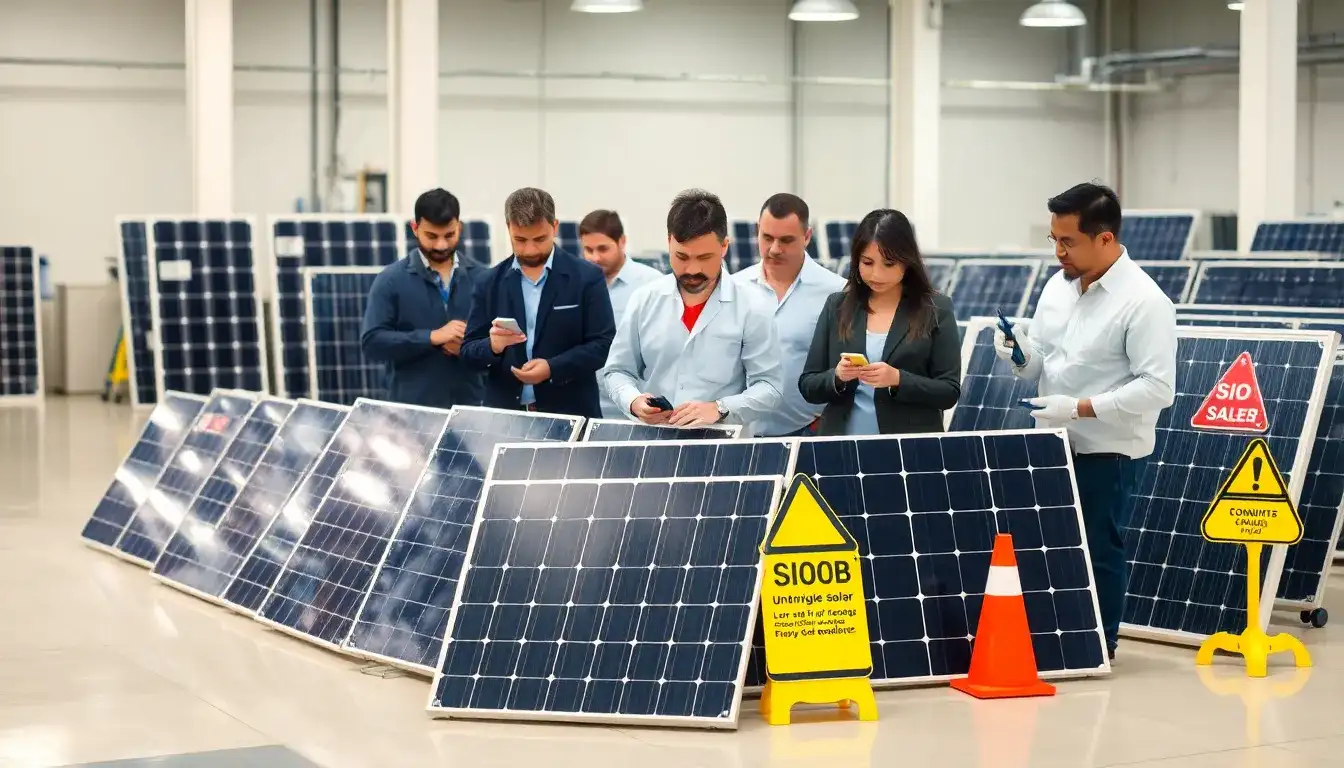
Pv Counterfeit Alert! Major Solar Panel Manufacturers Issue “Anti-Counterfeiting” Statements Amidst Installation Rush with Unauthorized “Fake Products” Emerging
On March 18, Trina Solar (688599.SH) and Aiko Solar (600732.SH) issued statements through their official WeChat accounts, urging customers to recognize authorized channels and avoid non-authorized sales. Trina Solar noted that some merchants are selling suspected company-branded solar panels through unofficial channels without the company’s consent. Aiko Solar echoed this concern, warning about the risks of purchasing from non-official sources and inviting reports of any suspected counterfeit products or infringement.
Why did these two leading manufacturers release simultaneous “anti-counterfeiting” statements? Industry insiders suggested that it may be related to disputes among manufacturers, OEMs, and distributors. Currently, the prices of solar panels are on the rise, and popular models from mainstream brands are in short supply, prompting all industry players to strive for a larger share of the market.
Trina Solar emphasized that the unauthorized sale of suspected company products severely disrupts market order, harming the legitimate rights and interests of authorized distributors and consumers, while also posing significant risks to product quality, after-sales service, and user rights. Aiko Solar provided several risk warnings about purchasing from unofficial channels, including concerns over product quality, lack of after-sales support, difficulties in asserting rights, abnormal pricing risks, and infringement risks. It highlighted that products from non-official channels (such as personal purchases, non-certified e-commerce stores, and second-hand platforms) might be counterfeit, refurbished, modified, or have replaced parts, preventing customers from enjoying the quality and service guarantees of genuine products.
Rumors suggest that some of these unauthorized products may originate from OEM factories. However, a representative from Aiko Solar clarified that the company does not have OEM factories for its ABC panel products. The purpose of their statement is to remind customers to protect their rights amid the chaos potentially resulting from new regulations. Trina Solar did not specifically respond to questions about OEM situations but did indicate that the main goal of their announcement is to regulate the market channels. Recently, the domestic rush for installations has led to a shortage of panels, causing significant market confusion. This rush is expected to continue until the policy window closes, after which a more rational market environment is anticipated.
OEM collaboration is a common practice in the industry. A representative from a leading panel manufacturer mentioned that if a brand struggles with capacity or urgent delivery requirements, it might outsource some orders to other manufacturers for production. “It’s akin to renting someone else’s capacity; the OEM earns processing fees, but in the end, the product delivered to customers remains under the original brand.”
Moreover, before the Spring Festival, manufacturers kept inventories low to avoid depreciation losses due to declining prices in the supply chain. However, since late February, there has been a sharp increase in demand in the distributed market, resulting in a temporary shortage of panel supplies and increased OEM requests. For instance, a solar company that claims to only operate as an OEM has proposed a concept of “shared capacity,” advocating for a flexible supply chain where manufacturing entities without brands provide OEM and ODM services to other brands, with products delivered under the client’s branding.
This cooperative approach is also common among leading firms, with the processing fees negotiated based on market conditions. In the OEM model, clients lead product design and technical standards while the OEM handles production to ensure quality and timely delivery. In the ODM model, the OEM is responsible for the entire process. “OEM products should not be deemed as ‘fake goods,’ but unauthorized products are typically viewed by the commissioning party as not having undergone quality inspection, and no after-sales or warranty services will be offered for unverified products,” an industry insider commented.
The rush for installations has been driven by the policy window. “A month ago, it was hard to imagine a shortage of components,” several solar industry professionals remarked regarding the unexpected surge in the market. In fact, according to statistics from the China Photovoltaic Industry Association, global panel production capacity had already exceeded 1000 GW by the end of 2023, with China accounting for over 80% of global production capacity and output.
Regarding panel prices, after a previous surge caused by silicon material shortages, they have recently fluctuated due to a temporary supply-demand imbalance, with prices dropping from a peak of 1.8 RMB per watt to around 0.6 RMB, which is considered a critical price point. Analysts note that while price changes are taking place, panels, being the most downstream segment of the manufacturing process, have relatively little negotiating power compared to upstream (silicon wafers and cells) and downstream (power plant customers) sectors.
In February, the National Development and Reform Commission and the National Energy Administration released notifications aimed at deepening the market-oriented reform of new energy feed-in tariffs to promote high-quality development of the sector. This placed panel manufacturers in a favorable position. The document stipulates that starting June 1, the scale of power generation for projects that begin operation will be dynamically adjusted based on the completion of local renewable energy development targets, with the mechanism’s electricity prices determined through market-based bidding.
Recent reports indicate a slight increase in orders, primarily focused on distributed projects, particularly commercial ventures, indicating that the notice has indeed spurred a rush in the distributed market. With less than three months until the critical transition between old and new policies, panel distributors and EPC investors have stated that their focus is entirely on securing installations by the 430 and 531 deadlines to lock in policy benefits for “existing projects.” Analysts caution that under the “low inventory – high volatility” cycle, solar companies still need to enhance their responsiveness to demand changes. However, from the perspective of protecting customer rights, it’s likely that other panel manufacturers will also advise customers to purchase solar products from authorized channels.







